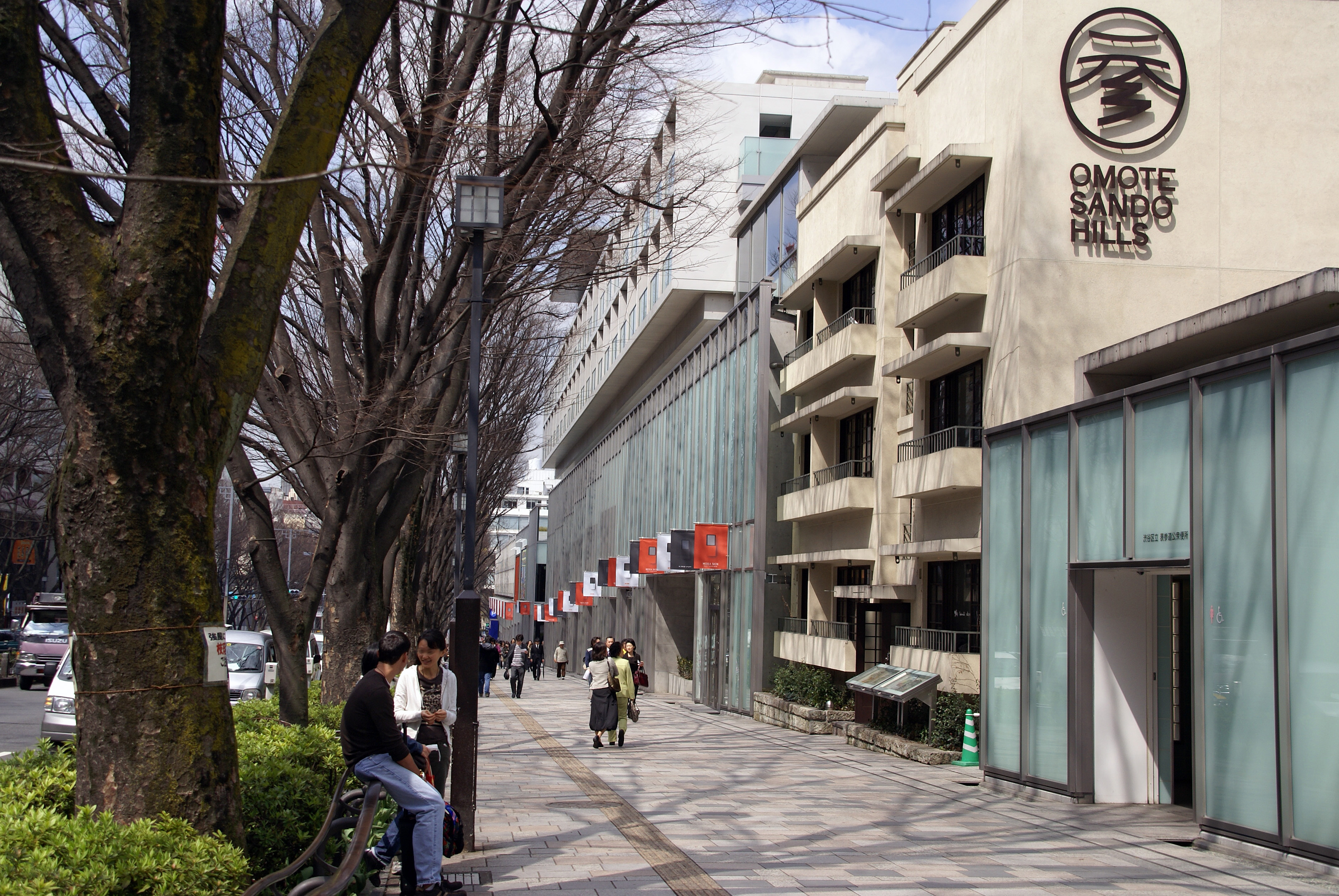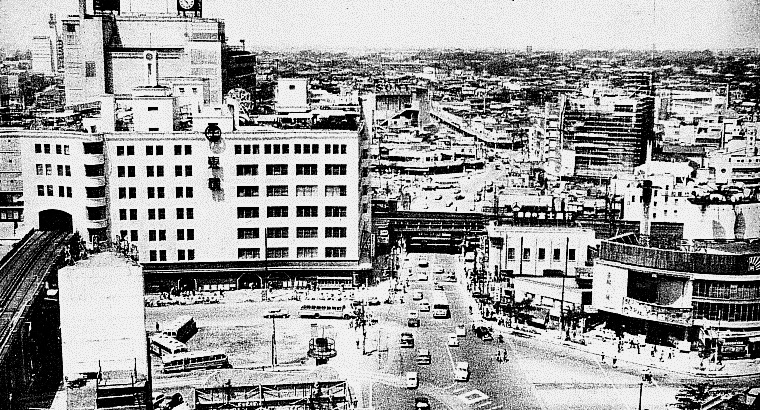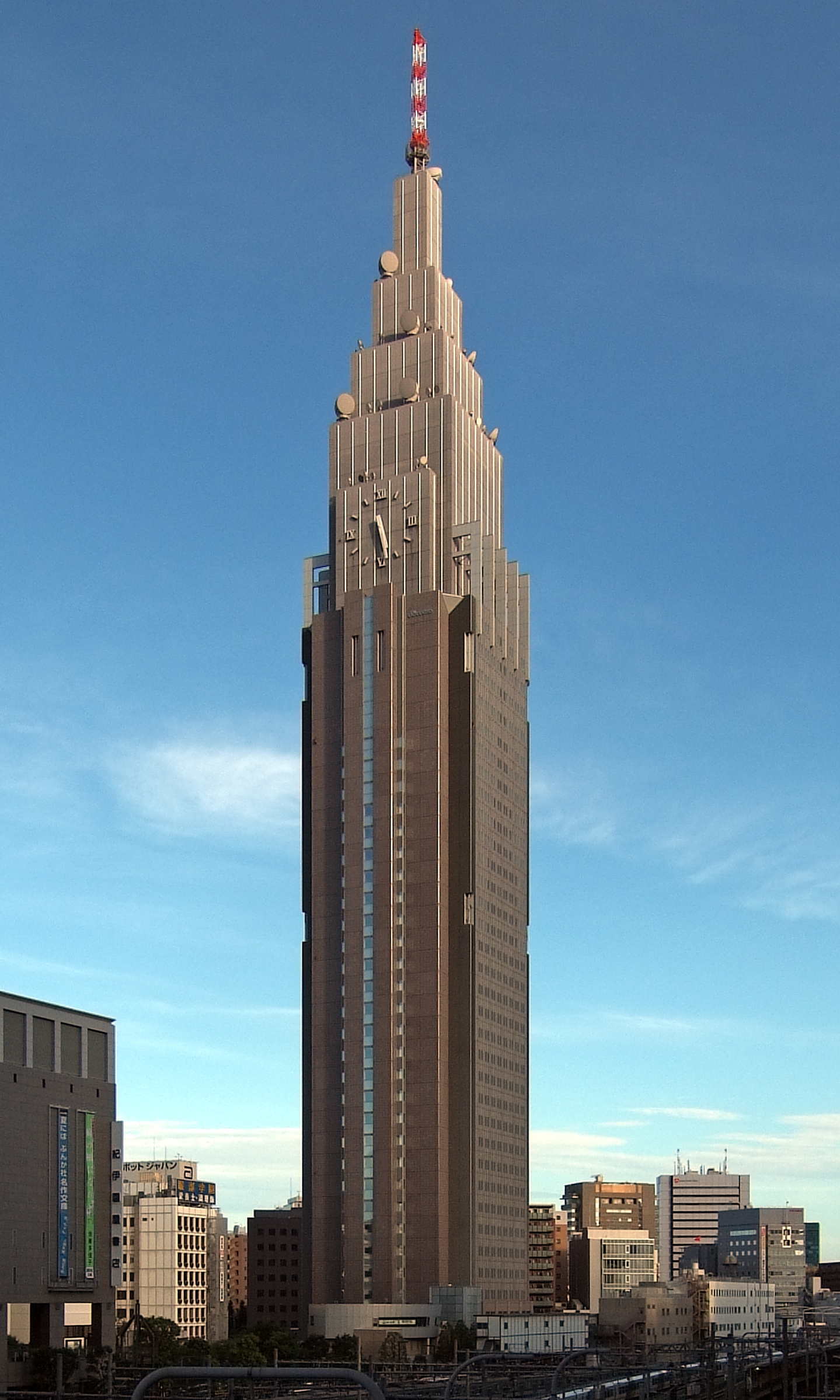|
Ura-Harajuku
* is a district in Shibuya, Tokyo, Japan. Ura-Harajuku, or Ura-Hara, is the common name given to the network of smaller Harajuku backstreets spreading perpendicular to Omotesando, corresponding on official maps of Shibuya ward as Jingūmae 3 chōme and 4 chōme. Ura-Harajuku contrasts with the main vehicle thoroughfares and retail offerings of Harajuku being mostly pedestrianized and showcasing smaller independent shops and dining options. Cat Street, following the course of the main Shibuya River tributary, is the principal route through this district spreading from Sendagaya in the north towards Shibuya in the south. See also * Japanese street fashion *Hiroshi Fujiwara *Jun Takahashi *A Bathing Ape A Bathing Ape (or BAPE) is a Japanese fashion brand founded by Nigo (Tomoaki Nagao) in Ura-Harajuku in 1993.David FischerNIGO Announces His Definitive Departure from BAPE'' highsnobiety'', May 25, 2013 [...More Info...] [...Related Items...] OR: [Wikipedia] [Google] [Baidu] |
Harajuku
is a district in Shibuya, Tokyo, Japan. Harajuku is the common name given to a geographic area spreading from Harajuku Station to Omotesando, corresponding on official maps of Shibuya ward as Jingūmae 1 chōme to 4 chōme. In popular reference, Harajuku also encompasses many smaller backstreets such as Takeshita Street and Cat Street spreading from Sendagaya in the north to Shibuya in the south. Harajuku is known internationally as a center of Japanese youth culture and fashion. Shopping and dining options include many small, youth-oriented, independent boutiques and cafés, but the neighborhood also attracts many larger international chain stores with high-end luxury merchandisers extensively represented along Omotesando. Harajuku Station on the East Japan Railway (JR East) Yamanote Line and Meiji-jingumae 'Harajuku' Station served by the Tokyo Metro Chiyoda Line and Tokyo Metro Fukutoshin Line also act as gateways to local attractions such as the Meiji Shrine, Y ... [...More Info...] [...Related Items...] OR: [Wikipedia] [Google] [Baidu] |
A Bathing Ape
A Bathing Ape (or BAPE) is a Japanese fashion brand founded by Nigo (Tomoaki Nagao) in Ura-Harajuku in 1993.David FischerNIGO Announces His Definitive Departure from BAPE'' highsnobiety'', May 25, 2013Breaking Down Bapes TheHipHopIcon.com, 2007. Retrieved October 4, 2007 The brand specializes in men's, women's and children's lifestyle and street wear, running 19 stores in Japan, including Bape Stores, Bape Pirate Stores, Bape Kids Stores, Bapexclusive Aoyama, and Bapexclusive . The Kyoto store also includes Bape Gallery, a space used for various events ... [...More Info...] [...Related Items...] OR: [Wikipedia] [Google] [Baidu] |
Visvim
Visvim is a Japanese menswear brand founded by Hiroki Nakamura in Ura-Harajuku in 2001. The brand is headquartered in Tokyo, Japan, and has stores in Japan and the USA. Visvim is also sold internationally in department stores and boutiques, such as Bergdorf Goodman in New York and Dover Street Market in London. In addition to the main visvim line, Nakamura designs a womenswear line called WMV, and a conceptual menswear line called F.I.L. Indigo Camping Trailer.four-pins.coNYFW S/S 2014 Interview with Hiroki Nakamura/ref> Etymology The word “Visvim” does not have any meaning. Hiroki Nakamura has said that he liked v-lettered logos, and browsed through the “v” section of a Latin dictionary until he came upon “ vis” and “vim” and liked how the two words looked together. F.I.L., the name of Visvim's flagship stores, stands for Free International Laboratory. This stems from Nakamura wanting the stores to be a working laboratory for an international brand. Hi ... [...More Info...] [...Related Items...] OR: [Wikipedia] [Google] [Baidu] |
Shibuya River
The is a river which flows through central Tokyo, Japan. The river is 2.6 km in length originating close to Shibuya Station and passing through Shibuya and Minato wards before merging with the Furu River near Hiroo and flowing into Tokyo Bay near Shiba Koen. The Inner Circular Route is built above the lower course of the river. The Shibuya River banks are predominantly unlandscaped; the major tributary of the river, the Onden River, originates in Sendagaya and passes largely unnoticed directly under Cat Street in the heart of Ura-Harajuku. The Onden River merges with the Uda River in central Shibuya forming the Shibuya River which then flows directly under Shibuya Station as a covered concrete drain. Redevelopment plans for Shibuya Station include the prospect of a more accessible Shibuya River with landscaping and pedestrian access. See also * Shibuya, Tokyo Shibuya ( 渋谷 区 ''Shibuya-ku'') is a special ward in Tokyo, Japan. As a major commercial and fin ... [...More Info...] [...Related Items...] OR: [Wikipedia] [Google] [Baidu] |
Japanese Street Fashion
Japanese street fashion refers to a number of styles of contemporary modern clothing in Japan. Created from a mix of both local and foreign fashion brands, Japanese street fashions tend to have their own distinctive style, with some considered to be extreme and avant-garde, with similarities to the haute couture styles seen on European catwalks. History As early as the 1950s, there were a few brands specially catered to street fashion, such as Onitsuka Tiger (now known as the ASICS). In addition, the emergence of strong youth culture in the 1960s and 1970s that continues today (especially in Harajuku, a district in Shibuya, Tokyo) drives much of the development of new styles, looks, and fashion subcultures. The rise of consumerism, which played an important part in Japan's "national character" during its economic boom in the 1980s, continues to influence fashion purchases, even after this economic bubble burst in the 1990s. These factors result in the swift turnover and varia ... [...More Info...] [...Related Items...] OR: [Wikipedia] [Google] [Baidu] |
Hiroshi Fujiwara
(born 1964) is a Japanese musician, producer, and designer. Life Fujiwara was born in Ise, Mie. He moved to Tokyo at eighteen and became a standout in the Harajuku street fashion scene. During a trip to New York City in the early 1980s he was introduced to hip hop; taking American records back to Tokyo, he became one of Japan's first hip hop DJs, and is credited with popularizing the genre in Japan. He subsequently went into music producing, specializing in remixes."Hiroshi Fujiwara: International Man of Mystery" , 2005, '''' He is known as a godfather of |
Jun Takahashi
is a Japanese fashion designer who created the brand Undercover. Early life and education Takahashi was born in Kiryū, Gunma. He attended Gunma Kiryu Nishi High School. In 1988, he enrolled in Fashion Education at Bunka Fashion College. In his free time, he was the vocal lead for the cover band " Tokyo Sex Pistols", where his role model was Vivienne Westwood. Career In 1993, he launched Undercover, a high-end streetwear label for men, women and children. Also in 1993, he launched Nowhere, a retail venture in Ura-Harajuku with his friend Nigo, the founder of BAPE. In 1994–1995 he participated in Tokyo Fashion Week. In 1995 the Nowhere Ltd. company store opened in Harajuku. Japanese designer Rei Kawakubo who created the brand Comme des Garcons, became Jun's mentor and persuaded him to come to Paris. The Paris store Colette liked his clothes so much that they asked Takahashi to present his 1998 collection "Exchange" in their store. Undercover made its debut at Pari ... [...More Info...] [...Related Items...] OR: [Wikipedia] [Google] [Baidu] |
Cat Street, Ura Harajuku 2
The cat (''Felis catus'') is a domestic species of small carnivorous mammal. It is the only domesticated species in the family Felidae and is commonly referred to as the domestic cat or house cat to distinguish it from the wild members of the family. Cats are commonly kept as house pets but can also be farm cats or feral cats; the feral cat ranges freely and avoids human contact. Domestic cats are valued by humans for companionship and their ability to kill rodents. About 60 cat breeds are recognized by various cat registries. The cat is similar in anatomy to the other felid species: they have a strong flexible body, quick reflexes, sharp teeth, and retractable claws adapted to killing small prey. Their night vision and sense of smell are well developed. Cat communication includes vocalizations like meowing, purring, trilling, hissing, growling, and grunting as well as cat-specific body language. Although the cat is a social species, they are a solitary hunter ... [...More Info...] [...Related Items...] OR: [Wikipedia] [Google] [Baidu] |
Shibuya, Tokyo
Shibuya ( 渋谷 区 ''Shibuya-ku'') is a special ward in Tokyo, Japan. As a major commercial and finance center, it houses two of the busiest railway stations in the world, Shinjuku Station (southern half) and Shibuya Station. As of April 1, 2022, it has an estimated population of 228,906 and a population density of 15,149.30 people per km2 (39,263.4/sq mi). The total area is 15.11 km2 (5.83 sq mi). The name "Shibuya" is also used to refer to the shopping district which surrounds Shibuya Station. This area is known as one of the fashion centers of Japan, particularly for young people, and as a major nightlife area. History Heian to Edo period Shibuya was historically the site of a castle in which the Shibuya family resided from the 11th century through the Edo period. Following the opening of the Yamanote Line in 1885, Shibuya began to emerge as a railway terminal for southwestern Tokyo and eventually as a major commercial and entertainment center. Meiji to Showa p ... [...More Info...] [...Related Items...] OR: [Wikipedia] [Google] [Baidu] |
Japanese Addressing System
The Japanese addressing system is used to identify a specific location in Japan. When written in Japanese characters, addresses start with the largest geographical entity and proceed to the most specific one. When written in Latin alphabet, Latin characters, addresses follow the convention used by most Address format, Western addresses and start with the smallest geographic entity (typically a house number) and proceed to the largest. The Japanese system is complex and idiosyncrasy, idiosyncratic, the product of the natural growth of urban areas, as opposed to the systems used in cities that are laid out as grids and divided into quadrants or districts. Address parts Japanese addresses begin with the largest division of the country, the Prefectures of Japan, prefecture. Most of these are called ''ken'' (県), but there are also three other special prefecture designations: ''to'' (都) for Tokyo, ''dō'' (道) for ''Hokkaidō'' and ''fu'' (府) for the two urban prefectures of O ... [...More Info...] [...Related Items...] OR: [Wikipedia] [Google] [Baidu] |
Sendagaya
is an area within Shibuya ward, one of the 23 special wards of Tokyo. Introduction Sendagaya is nestled in an urban green area in Shibuya ward between Shinjuku ward and Shinjuku Gyo-en (Shinjuku Imperial Gardens) to the north (an area in Sendagaya, 6-chōme, is actually located within the gardens). The National Stadium, also known as Olympic Stadium, Tokyo is located immediately to the east, bordering Sendagaya 2-chome. Meiji Shrine and Yoyogi Station are found to the west. Jingumae and Harajuku are directly south. Many important cultural and sporting venues are located in and around Sendagaya. Sendagaya is a mix of old, new, and incredibly futuristic designs. From Sendagaya Station, the main station in Sendagaya, bustling Shinjuku is a tranquil 10-minute walk away along the Imperial Gardens' western wall. Sendagaya Entrance to the gardens is 2 minutes away from Sendagaya Station. Sendagaya, particularly 3-chōme, is home to dozens of clothing and accessory design w ... [...More Info...] [...Related Items...] OR: [Wikipedia] [Google] [Baidu] |



.jpg)



